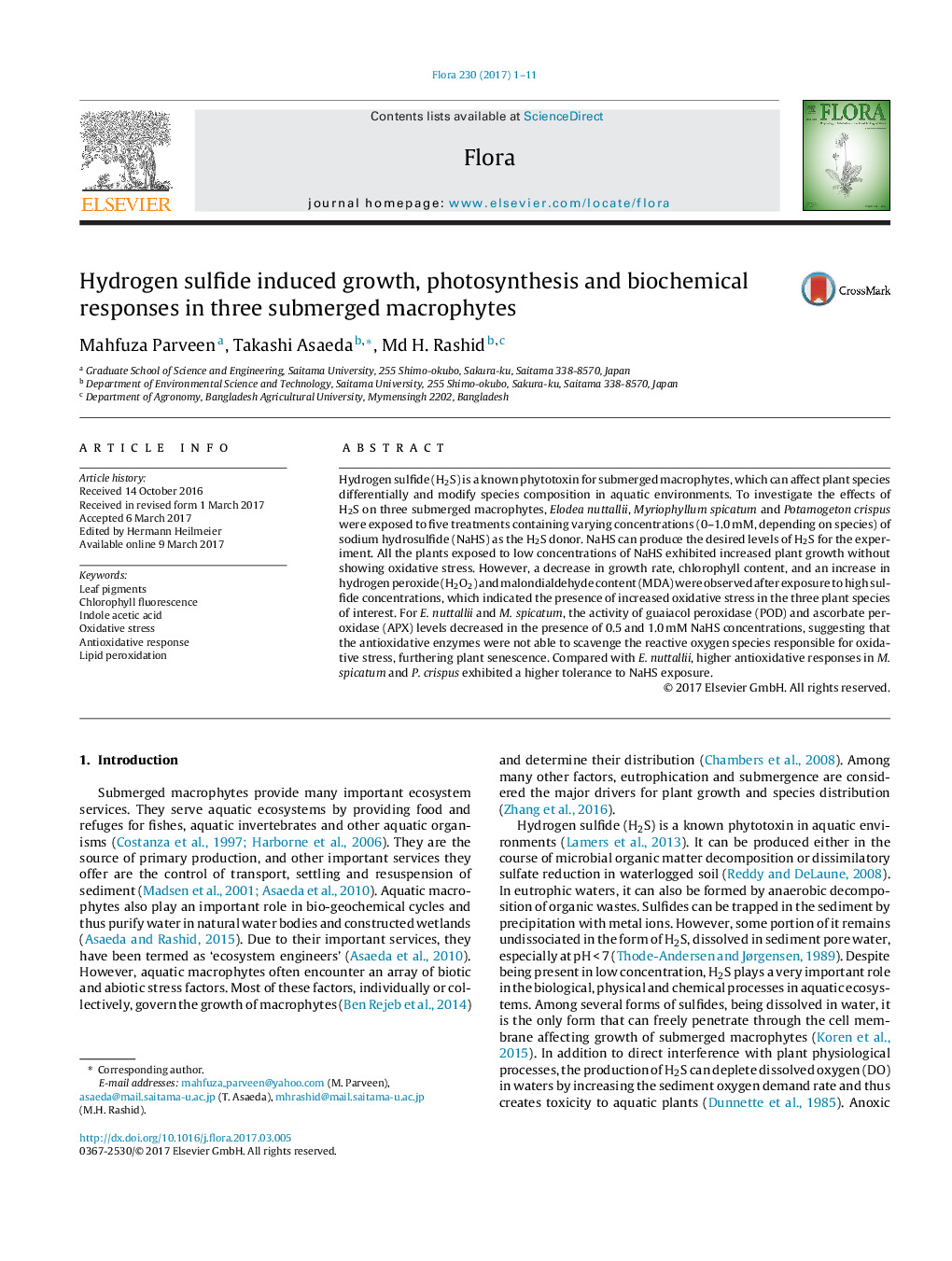| کد مقاله | کد نشریه | سال انتشار | مقاله انگلیسی | نسخه تمام متن |
|---|---|---|---|---|
| 5532382 | 1549929 | 2017 | 11 صفحه PDF | دانلود رایگان |
- The three species are negatively affected when exposed to high NaHS concentrations.
- The three submerged macrophytes adapt to H2S stress with increased growth and antioxidative defense system.
- The sequence of NaHS tolerance in three submerged macrophytes are P. crispus > M. spicatum > E. nuttallii.
- H2S regime in water can change the distribution of submerged macrophytes in a wetland area based on species-specific tolerance.
Hydrogen sulfide (H2S) is a known phytotoxin for submerged macrophytes, which can affect plant species differentially and modify species composition in aquatic environments. To investigate the effects of H2S on three submerged macrophytes, Elodea nuttallii, Myriophyllum spicatum and Potamogeton crispus were exposed to five treatments containing varying concentrations (0-1.0Â mM, depending on species) of sodium hydrosulfide (NaHS) as the H2S donor. NaHS can produce the desired levels of H2S for the experiment. All the plants exposed to low concentrations of NaHS exhibited increased plant growth without showing oxidative stress. However, a decrease in growth rate, chlorophyll content, and an increase in hydrogen peroxide (H2O2) and malondialdehyde content (MDA) were observed after exposure to high sulfide concentrations, which indicated the presence of increased oxidative stress in the three plant species of interest. For E. nuttallii and M. spicatum, the activity of guaiacol peroxidase (POD) and ascorbate peroxidase (APX) levels decreased in the presence of 0.5 and 1.0Â mM NaHS concentrations, suggesting that the antioxidative enzymes were not able to scavenge the reactive oxygen species responsible for oxidative stress, furthering plant senescence. Compared with E. nuttallii, higher antioxidative responses in M. spicatum and P. crispus exhibited a higher tolerance to NaHS exposure.
Journal: Flora - Volume 230, May 2017, Pages 1-11
